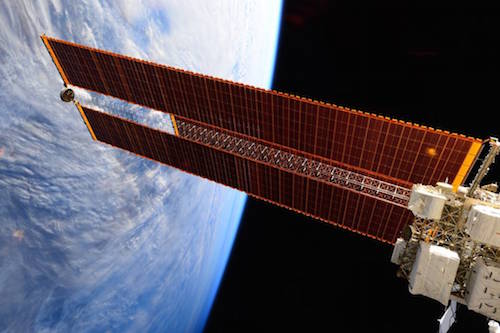 Evolution
Evolution
 Human Origins
Human Origins
 Intelligent Design
Intelligent Design
 Physics, Earth & Space
Physics, Earth & Space
Understatement? Physicist Finds "Cognitive Awareness," as a Product of Evolution, "Almost Surprising"

Dartmouth theoretical physicist Marcelo Gleiser has an interesting commentary up at NPR (“Moving from Creation of the Cosmos to Human Life“). He offers the distinction between four separate epic “ages” of cosmic evolution. While these are not firmly bounded and separate from each other, it’s still a neat way of conceptualizing what went to into the production of intelligent, conscious carbon-based life forms.
The first age is the “physical,” followed by the “chemical,” the “biological,” and finally the “cognitive”:
Although they can be arranged chronologically from the Big Bang onwards, they are still ongoing; they don’t end, their boundaries being somewhat fluid. The physical age goes from the Big Bang to the formation of the first stars, when the universe was around 200 million years, or so, old. Before this first time, there were no chemical elements to speak of, only the lightest ones, forged in the first minutes of cosmic expansion: hydrogen, helium, lithium and some of their isotopes.
As the first stars formed, they lived their short lives to generate heavier chemicals and new stars, in a cycle of creation and destruction that still goes on today. These stellar life cycles create the elements of the Periodic Table. The stuff you have in your body — the calcium in your bones, the iron in your blood — are the remains of stars long gone. That this star stuff got organized to the point of becoming animated, thinking matter is nothing short of wonderful.
The chemical age starts when these heavier elements are forged and spread across the cosmos, eventually becoming part of nascent stellar systems, stars circled by planets and their moons.
Read the rest. What he doesn’t say is that each of these “ages” is the focus of a phase of evident intelligent design, explicated by ID advocates. The evidence of design in chemistry, for example, has been the main concern of Michael Denton’s most recent writing and teaching. Stephen Meyer in his two books, Signature in the Cell and Darwin’s Doubt, emphasizes the beginnings of the biological age (life itself, then complex animal life). James Le Fanu considers the cognitive revolution in his wonderful book Why Us?: How Science Rediscovered the Mystery of Ourselves.
I’ve written before about Gleiser’s point that even if simple life — bacteria — were a freebie, that doesn’t mean complex life and conscious life are as well:
The biological age, the age of life in the cosmos, is where NASA focuses much of its efforts for finding life elsewhere. From the story of life here, we know that it was very simple for most of the 3.5 billion years that it existed: one-celled organisms dominated for almost 3 billion years. According to the theory of evolution, there is no directive for life to become complex with time. It can, but it could just be bacteria all the way. Complex organisms may form as they did here, but they require a set of unusual conditions, from planetary stability (orbital, weather, etc.) to proper atmospheric composition — not so easy to find around.
Just “unusual” conditions are required? “Not so easy”? See Denton’s book Nature’s Destiny and the documentary short Privileged Species for a healthy corrective. As understatements, Gleiser’s formulations are equaled — no, topped — by his next sentence: “That life here evolved to generate a species with cognitive awareness is almost surprising.”
Get that. It’s “almost surprising,” but not quite. That the universe evolved from not even nothing, not even a vacuum, in such a way as to produce a thoughtful scientist coding his words in the English language, weighing the history of the cosmos for a readership of fellow carbon-based life forms able to decode the characters that form his article, which they receive over the Internet, and consider for themselves the quality of his ideas — this falls just a hair short of coming as a surprise to Dr. Gleiser.
I don’t mean to be hard on him. I can only imagine the pressure in the academic science world to downplay the wonder and astonishment at such a result — Gleiser himself, not to mention every other human being — coming about by the interaction of blind, dumb, undirected forces alone. When you are treading so close to the perilous frontier of intelligent design, you choose your words with all caution.
Image: Solar Arrays on the International Space Station, via ESA/NASA.
